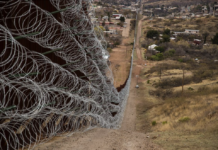
Tim Keller
Florida Southern College’s Marine Biology Department has received a grant from the National Science Foundation for $294,372 on the behavior and population of Florida stone crabs in the face of overfishing and climate change.
Florida provides 99 percent of all stone crab landings in the United States, it being one of the state’s most valuable natural commodities in South Florida, valued between $20 to $35 million annually. Their claws in particular are highly sought after, ranging in three sizes from medium to jumbo. However, what makes these crustaceans so inviting to industry: they are capable of regenerating their claws after being harvested.
Louisiana State University, an institution that received a $922,033 grant in order to conduct research into stone crabs partners with Florida Southern College for the purpose of building a biophysical model that will predict possible changes in the stone crab population in the future.
According to Dr. Philip Gravinese, who’s leading Florida Southern’s portion of the project, the marine biology department will be hatching stone crab larvae and monitoring their behavior and health in tanks that will simulate the conditions of ocean acidification and temperature changes.
Students will be observing how the larvae respond to environmental changes, as well as their mortality and growth rates. In addition, a small number of students will get the opportunity to conduct undergraduate research in the water of the Florida keys. Students will get to work with the stone crabs amd fisheries.
Climate change will affect the oceans in multiple ways, and the model that the research project is aiming to put together in the long run is the first of its kind. It includes climate change conditions, fishery health, and a commercially important animal.
Eventually, this model could be used with other commercially viable animals that industries depend on in particular. The goal is to help these industries predict how climate change could affect their businesses in the coming years, as well as help ensure the sustainability of fisheries in the long run. An industry where even slight regulations put locals at risk of being put out of business.
In Miami, near where stone crabs are most commonly fished in the Atlantic, small fisheries have struggled to keep up with the pandemic, depending on their access to harvest stone crabs for a living.
“Because of the pandemic, the majority of the fishermen started all taking out their traps,” said Angel Borden to WUSF. She’s the operations manager of the Lobster Walk fish market in Islamorada. “They’re like, ‘We can’t afford to keep fishing.’”
According to the Florida Fish and Wildlife Conservation Commission, Florida’s stone crab fisheries have experienced a long-term decline in its harvests, likely due to overfishing.




